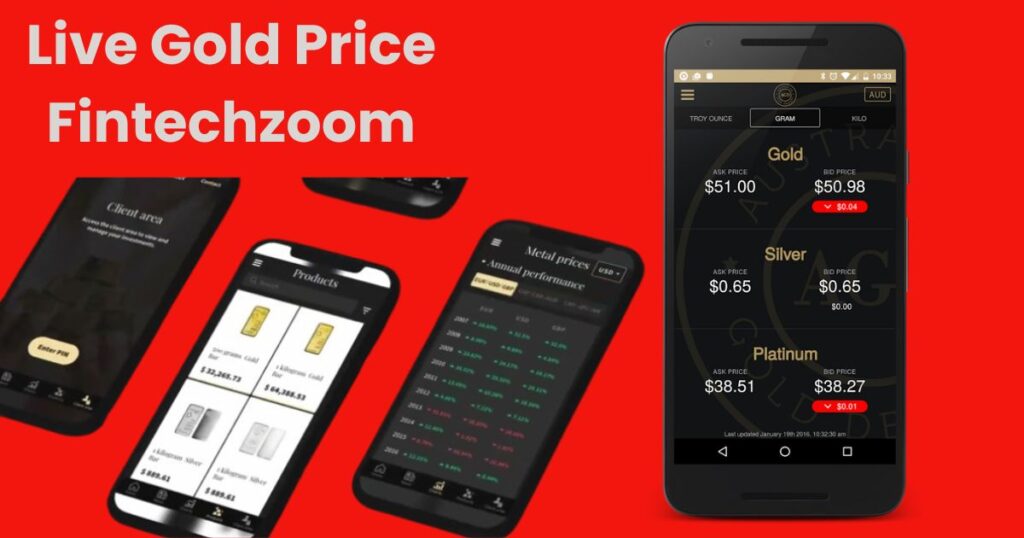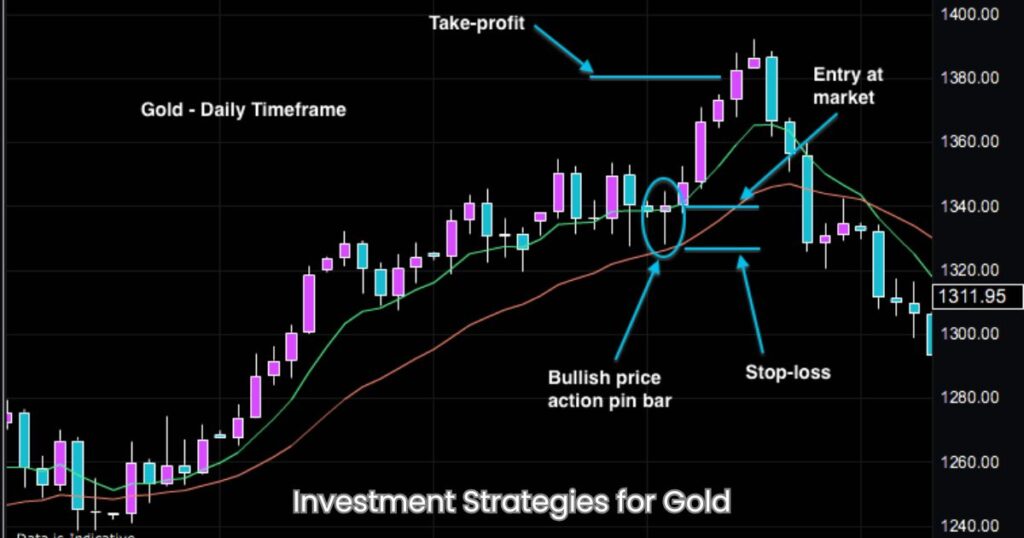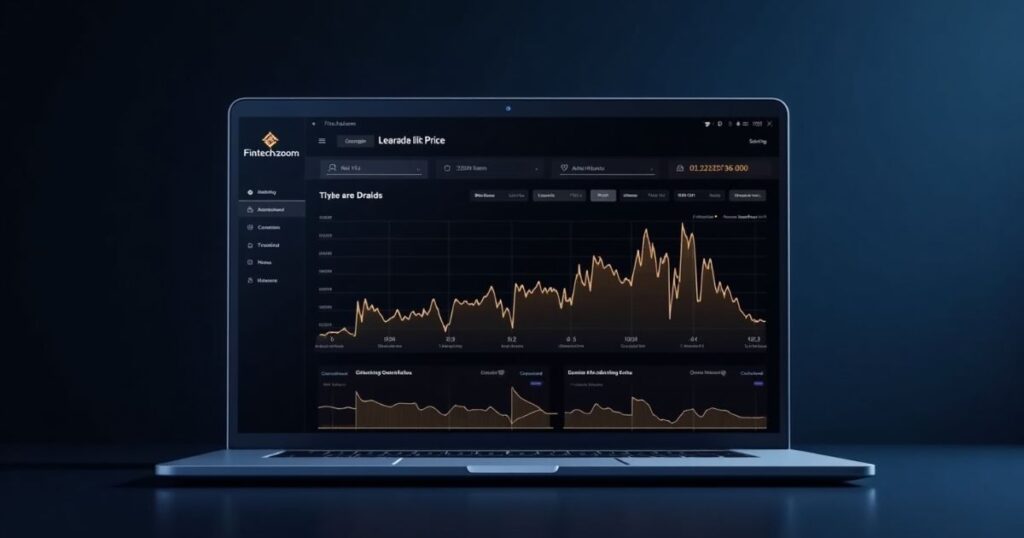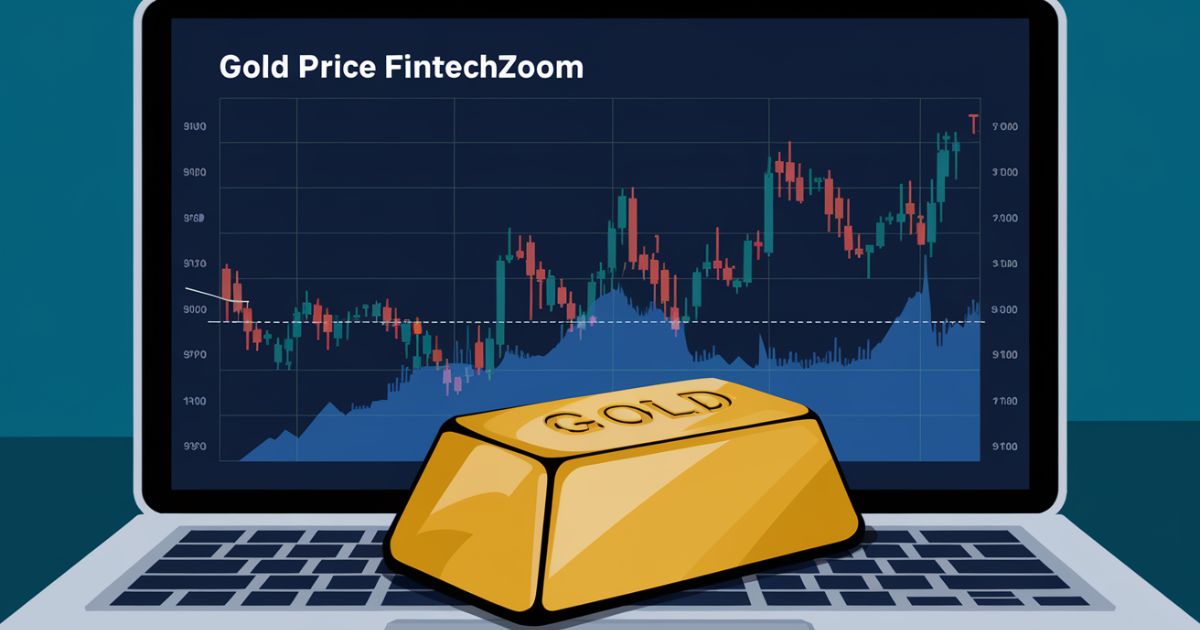In today’s volatile financial landscape, gold remains a cornerstone of investment portfolios, serving as a crucial safe-haven asset during times of economic uncertainty.
This comprehensive guide explores how Gold Price Fintechzoom revolutionizes the way investors track and analyze precious metal markets, providing real-time updates about the buying and selling prices of gold in the market and delivering crucial investment insights.
Gold as an Investment Asset
Gold has long been considered a safe-haven asset in times of economic uncertainty. Unlike fiat currencies that can be devalued due to inflation and market instability, gold maintains intrinsic value.
Investors turn to precious metals like gold to hedge against inflation, diversify portfolios, and protect wealth. Over centuries, gold has been used as a medium of exchange, a store of value, and a key asset in investment portfolios.
Gold’s value stems from its scarcity, industrial use, and demand for jewelry. Central banks also play a significant role in gold markets by holding reserves to stabilize economies. During times of economic instability, gold prices tend to surge, making it a reliable investment for risk-averse individuals.
Live Gold Price Fintechzoom

Fintechzoom provides real-time gold updates, ensuring investors stay informed about price fluctuations. It tracks live gold price movements, offering insights into key market trends and investment opportunities. Whether you’re a seasoned investor or a beginner, using Fintechzoom’s gold price tracker can help you make data-driven decisions.
Live gold prices depend on various factors, including demand from industries and investors, geopolitical events, and macroeconomic factors like interest rates and inflation. Fintechzoom’s advanced tracking features allow users to monitor market movements efficiently, helping them react to price changes quickly.
How Have the Gold Prices Shifted Recently?
Gold prices fluctuate due to economic and geopolitical events. In recent years, gold has witnessed sharp price movements due to:
- Global economic trends such as recessions and market crashes.
- Inflation spikes that reduce fiat currency value, driving investors toward gold.
- Central bank policies, including interest rate hikes and gold reserves.
- Supply chain disruptions in gold mining due to geopolitical tensions.
- Increased demand for gold ETFs and futures contracts.
A closer look at gold price charts over the last decade shows that prices tend to rise during times of economic uncertainty. For instance, during the 2020 global pandemic, gold prices surged to all-time highs due to high investor demand for safe-haven assets.
| Year | Average Price (USD/oz) | High (USD/oz) | Low (USD/oz) | Volatility Index |
| 2022 | $1,800 | $2,070 | $1,620 | 18.5% |
| 2023 | $1,940 | $2,135 | $1,810 | 16.8% |
| 2024 (YTD) | $2,080 | $2,220 | $1,990 | 11.2% |
Factors Influencing Gold Prices
Several factors influence gold prices, making them highly volatile. Some key factors include:
1. Inflation and Currency Devaluation
Gold serves as an inflation hedge, meaning its value typically increases when fiat currencies depreciate. When central banks print more money, leading to currency devaluation, investors flock to gold.
2. Interest Rates and Monetary Policies
Gold has an inverse relationship with interest rates. When rates are low, gold becomes more attractive as a store of value. Higher interest rates, on the other hand, make fixed-income assets more appealing, leading to lower gold demand.
3. Geopolitical Developments and Market Volatility
Gold prices often rise during geopolitical crises. Wars, trade conflicts, and political instability drive investors toward safe-haven assets like gold.
4. Supply and Demand Impact
Gold production depends on gold mining activities, which are influenced by labor strikes, mining costs, and government regulations. Additionally, gold demand from industries, central banks, and jewelry makers significantly impacts pricing.
5. Commodity Trading and ETFs
The rise of gold ETFs (Exchange-Traded Funds) has made gold investments more accessible. Increased trading volume in gold futures contracts also impacts short-term price fluctuations.
Read More Blog: Adrian Cryptopronetwork: Your Crypto Gateway
Investment Strategies for Gold

Gold has been a trusted store of value for centuries, offering protection against inflation, economic downturns, and currency devaluation. Investors today have multiple options for gold investment, ranging from traditional physical assets to modern financial instruments. Understanding the different strategies can help you diversify your portfolio and make informed decisions.
1. Physical Gold Investments
Investing in physical gold remains one of the most straightforward ways to own this precious metal. There are several forms to consider:
- Gold Bullion & Coins – These are the most common forms of physical gold investment. Investors prefer government-minted coins (e.g., American Gold Eagle, Canadian Maple Leaf) for their authenticity and easy liquidity.
- Gold Bars – Typically purchased by serious investors looking for long-term wealth storage. Bars come in various weights and require secure storage.
- Jewelry & Collectibles – While jewelry can be an investment, it often comes with high craftsmanship costs, reducing its resale value compared to pure gold.
Key Considerations:
- Secure storage is necessary, whether in a personal safe or a vault service.
- Transaction costs, including premiums and taxes, may impact returns.
- Liquidity varies depending on the form—bullion and coins tend to sell faster than jewelry.
2. Gold ETFs and Futures Contracts
For those who prefer not to deal with physical gold storage, financial instruments offer an alternative:
- Gold ETFs (Exchange-Traded Funds): These funds track gold prices and allow investors to gain exposure without holding physical assets. They are traded like stocks and offer high liquidity.
- Gold Futures Contracts: These allow investors to speculate on gold prices, using leverage to amplify gains (or losses). Futures trading is more suited for experienced investors due to market volatility.
- Gold Mining Stocks & Mutual Funds: Investing in gold-mining companies provides indirect exposure to gold prices, with added risks linked to company performance and production costs.
Key Considerations:
- ETFs provide easy liquidity and lower costs than buying physical gold.
- Futures contracts involve risks due to price volatility and expiration timelines.
- Mining stocks may not always correlate with gold prices due to operational risks.
3. Central Banks and Gold Reserves
Central banks play a crucial role in the global gold market. Many nations hold large gold reserves to back their currencies and stabilize their economies. Countries like the U.S., China, and Russia have continued to accumulate gold, influencing global supply and demand.
Why It Matters for Investors:
- When central banks increase their gold reserves, demand rises, potentially driving up gold prices.
- Geopolitical events or economic uncertainties often push central banks to buy more gold, making it a safe-haven asset.
- Currency depreciation can lead to higher gold prices, benefiting long-term investors.
4. Cryptocurrency vs. Gold
With the rise of digital assets, many investors compare cryptocurrency to gold as a store of value. Here’s a quick comparison:
| Feature | Gold | Cryptocurrency |
| Tangible Asset | Yes | No |
| Volatility | Low to Medium | High |
| Inflation Hedge | Strong | Uncertain |
| Liquidity | High | Varies by market |
| Regulation | Well-established | Still evolving |
Key Insights:
- Gold has a proven track record of stability, while cryptocurrency remains highly volatile.
- Cryptocurrencies like Bitcoin are often called “digital gold,” but they lack gold’s physical backing.
- Investors seeking long-term stability may prefer gold, while those open to risk and innovation may explore crypto investments.
Diversification: Combining Gold with Other Assets
Gold is a powerful diversification tool, reducing overall portfolio risk. Strategies include:
- Gold + Cryptocurrencies: While highly volatile, adding both assets can provide growth opportunities in a diversified portfolio.
- Gold + Stocks: Balancing equities with gold can protect against market downturns.
- Gold + Real Estate: Gold provides liquidity while real estate offers long-term appreciation.
- Gold + Bonds: A mix of gold and bonds can hedge against inflation and interest rate fluctuations.
Read More Blog: Waters Cryptopronetworkcom: Transforming Crypto Trading 2025
Fintechzoom Features for Gold Investors

Fintechzoom provides several advanced features that cater to gold investors:
- Real-time Gold Updates: Track live gold prices and market fluctuations instantly.
- Gold Market Trends Analysis: Get insights into macroeconomic factors, central bank activities, and supply-demand trends.
- Investment Portfolio Tools: Compare gold with other asset classes and determine optimal investment strategies.
- Gold Price Forecasting Models: Access predictive analytics based on historical data and market trends.
Comparative Analysis: Gold vs Other Investments
Gold competes with several investment options, including stocks, bonds, cryptocurrencies, and real estate. Here’s a comparative analysis:
| Investment Type | Risk Level | Return Potential | Liquidity | Inflation Hedge |
| Gold | Low | Moderate | High | Yes |
| Stocks | High | High | High | No |
| Bonds | Low | Low | Medium | No |
| Cryptocurrency | Very High | Very High | High | No |
| Real Estate | Moderate | High | Low | Yes |
Gold remains a stable investment option, especially during economic downturns, whereas stocks and cryptocurrencies tend to be volatile.
What Role Does Fintechzoom Play in Monitoring Gold Prices?
Fintechzoom acts as a powerful gold price tracking tool, helping investors monitor price movements and market trends. Some of its essential roles include:
- Providing real-time gold updates to investors worldwide.
- Analyzing market trends and macroeconomic factors impacting gold prices.
- Offering gold investment strategies based on historical price data.
- Comparing gold with other assets like cryptocurrencies and real estate.
Forecasting Gold Prices
Gold price forecasting involves analyzing market trends, historical data, and economic indicators. Some common forecasting methods include:
- Technical Analysis: Uses price charts and patterns to predict future movements.
- Fundamental Analysis: Examines economic factors like inflation, interest rates, and central bank policies.
- Macroeconomic Indicators: Tracks GDP growth, unemployment rates, and global trade policies.
Mitigating Risk in Gold Investments
Investing in gold comes with risks, such as market fluctuations and geopolitical instability. Here are some ways to mitigate risks:
- Diversify your investment portfolio to reduce exposure.
- Monitor financial markets and economic trends regularly.
- Use stop-loss orders when trading gold futures to limit losses.
- Stay informed through real-time gold updates on Fintechzoom.
Frequently Asked Questions
How often are gold prices updated on Fintechzoom’s platform?
Gold prices on Fintechzoom are updated in real-time, with price data refreshing every 30 seconds. The platform sources data directly from major global exchanges and aggregates it instantaneously for accurate market representation.
What analytical tools does Fintechzoom provide for gold investors?
Fintechzoom offers comprehensive analytical tools including technical indicators, price charts, trend analysis, and sentiment indicators. The platform also provides customizable alerts, portfolio tracking capabilities, and detailed market reports for informed decision-making.
How does Fintechzoom compare to other gold price tracking platforms?
Fintechzoom distinguishes itself through its comprehensive feature set, combining real-time price updates with advanced analytical tools and educational resources. The platform’s interface is more user-friendly and its data more comprehensive than most competitors.
Can beginners effectively use Fintechzoom for gold investment decisions?
Yes, Fintechzoom caters to all experience levels. The platform offers educational resources, beginner-friendly tutorials, and intuitive tools that help novice investors understand market dynamics while providing advanced features for experienced traders.
What security measures does Fintechzoom implement for user data protection?
Fintechzoom employs bank-grade encryption protocols and multi-factor authentication to protect user data. The platform regularly updates its security measures and complies with international data protection standards to ensure user information remains secure.
Conclusion
Gold remains a crucial asset in global financial markets. Whether you invest in physical gold, ETFs, or futures, understanding factors influencing gold prices is essential. Platforms like Fintechzoom provide real-time gold updates, helping investors make well-informed decisions. By leveraging gold investment strategies and monitoring market trends, you can optimize your portfolio and safeguard your wealth against economic uncertainty.

Streamnexs.com offers a creative collection of Animal and Bird Name Ideas, helping pet owners, enthusiasts, and Bird Lovers Find Unique, Meaningful, and Fitting Names for their Feathered and Furry Friends.
